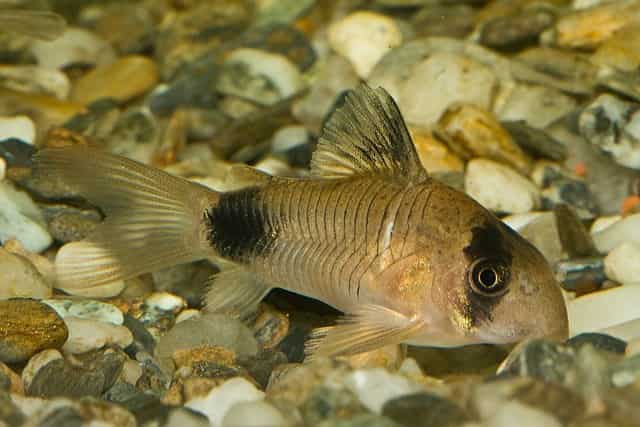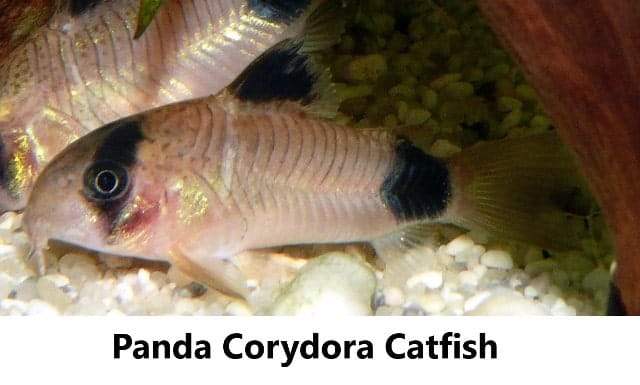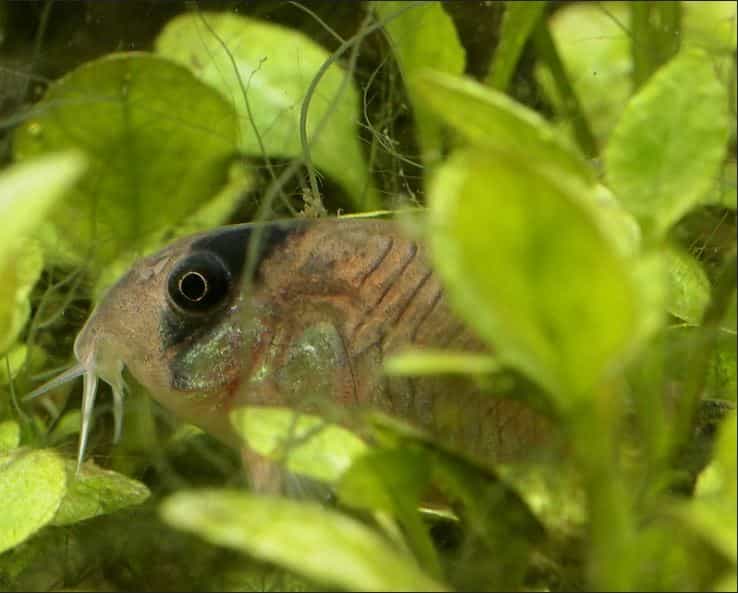How To Care For and Breed Panda Corys

Income earned from websites like Amazon and eBay support this website. If you tap a link to these companies and make a purchase, I may receive a referral fee.
Tank Requirements
The minimum tank size for this species is around 20 gallons for the minimum of 6 individuals. Preferably use a fine substrate of sand or rounded gravel, avoiding the use of sharp gravels that could damage their barbels and mouth. Species appreciate an aquarium with plenty of plants and shelters to hide in.
Behavior & Compatibility
You can keep Panda Corys in a community aquarium if the aquarium has small and equally peaceful fish as tank mates. Here is article I wrote that might be helpful in chosing tank mates: 20 Best Fish For Beginners
Guppies would also be an excellent choice for panda cory company.
This catfish is most active at night.
Panda Corys are a friendly and gregarious fish, and will be found in schools ranging from 20 to 100 individuals in its natural environment. Because of this, Corys should be kept in groups of at least six individuals.
Because of its ability to breathe atmospheric air, Corydora fish can commonly be seen swimming quickly to the surface to gulp air and return to the substrate to rest.
Hey awesome fish keeper! You can use these images. Please link back to my site when you do so. You’re awesome! Or did I say that? Anyway, Thanks!
Feeding
An omnivorous species, in their natural environment, they feed on worms, crustaceans, insects, and plant matter. In captivity, Panda Cory cats will readily accept dry and live food. Like most Corydoras, they will eat food that settles to the bottom of the aquarium.
This species is more active at night; you must provide food when you turn off the aquarium lights. Although they also feed during the day, but are slow to eat and may not compete well with other fish for food.
We often think Corydora catfish of as cleaner fish that live off of leftovers and fish waste. Under no circumstances should we should expect them to survive on ‘leftovers’ of food from other aquarium inhabitants, wastes, and residues.
We should feed panda Corys “bottom feeder” foods and live, fresh food. A frozen “live” blood worm would be 5 star dining to a cory catfish.
Reproduction
An oviparous (egg laying) species. During the mating ritual, the couple assumes a position known as the “T,” with the male carrying the upper part of the “T” and the female positioned cross wise to the male. The female will trap two to four eggs between her pelvic fins, where the male will fertilize them for about 30 seconds. The female will only swim near a suitable spot where she will lay the sticky eggs, usually on some flat surface such as aquarium glass, roots, and leaves.
Mating Cory’s will repeat this mating ritual many times, with up to 200 eggs being laid. The incubation period lasts around 4 to 5 days when the eggs hatch. The new born fry will be free swimming three days later. There is no parental care.
Corydora peeking **
Noticable differences between male and female Panda Corys
The males are slightly smaller than females. The females are more stocky and have a larger and more dilated ventral region.
Biotope (Natural Environment)
Panda Cory’s live in streams of clear, shaded water. These areas will have soft, sandy substrates.
Often these streams are fed with water from the runoff of melted Anddean mountain ice. This cold runoff can occasionally lower the Cory’s water to as low as 66° F.
Additional information
Corydoras, including the Panda Corydoras, are “optional” air breathers and have a modified intestine that has developed to enable the absorption of surface air. This allows them to survive in waters with low oxygen levels. Because of this, you will occasionally see them come up to the surface to take gulps of air in the aquarium.
Corydoras means: Cory = helmet; doras = leathery skin, breastplate. panda alluding to the Chinese mammal.
It has two spines at its ends of its pectoral fins.This mechanism serves as a defense against predators. When molested, the spines are projected, injuring the predator. There are reports that this species has venom glands in its fins. The rigid spines of the pectoral fin can puncture human skin, and a ‘sting’ can be excruciating, so take care when handling.
Known for eye “blinking” behavior, the Cory’s eyes rotate in their sockets, causing the impression of blinking. This species has a highly developed sense of smell, and its barbels allow it to find food buried in the substrate. Like most catfish, it is an armored species lacking scales, with two rows of bony plates on each side of its body covering the head region.

Common Name: Panda Cory, Panda Catfish
Scientific Name: Corydoras panda
Order: Siluriformes — Family: Callichthyidae (Armored catfishes)
Distribution: South America, upper Amazon (Peru)
Adult Size: 1.5 in — Average size in an aquarium: 1 in
Life Expectancy: 10 years
pH: 6.0 to 7.6 — Hardness: 2 – 12
Temperature: 68°F to 82°F
* Panda Corydora picture was provided by https://en.wikipedia.org/wiki/Corydoras_panda
** Picture provided by: Dornenwolf
Corydoras panda , Panda Panzerwels
OLYMPUS DIGITAL CAMERA
References.
Baensch, H.A. and R. Riehl, 1985. Aquarien atlas. Band 2. Mergus, Verlag für Natur-und Heimtierkunde GmbH, Melle, Germany. 1216 p.
Reis, R.E., 2003. Callichthyidae (Armored catfishes). p. 291-309. In R.E. Reis, S.O. Kullander and C.J. Ferraris, Jr. (eds.) Checklist of the Freshwater Fishes of South and Central America. Porto Alegre: EDIPUCRS, Brasil.
Romero, P., 2002. An etymological dictionary of taxonomy. Madrid, unpublished.
